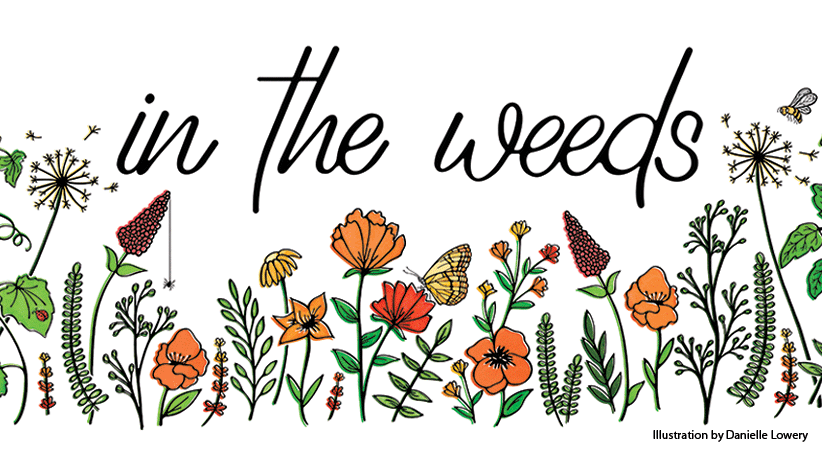How to grow peppers
It doesn’t matter if you prefer the sweet crunch of a bell pepper or the fiery heat of a habanero, you’ll find growing your own peppers is easy and rewarding. Both sweet and hot peppers grow on plants that are productive, but also beautiful with glossy fruits in a variety of shapes, sizes and colors.
Pepper (Capsicum annuum)
When to plant seedlings: In late spring when soil temperatures are at least 65 degrees F
Light: Full sun
When to harvest: When the fruits are the mature size and desired color, 80 to 100 days from transplanting
Yields: Sweet bell peppers produce 5 to 10 fruits per plant, hot peppers can produce 20 to 40 fruits per plant
Problems Bacterial leaf spot, blossom end rot, sunscald

Get started with planting peppers
Peppers are a heat- and sun-loving vegetable and need a long growing season to mature. Because of this, they’re typically grown from seeds started indoors or purchased as transplants from garden centers in late spring.
Many gardeners prefer to start their own seeds because it gives them so many more variety choices. You don’t need a big garden to grow peppers. While some plant them in raised beds, you can also grow them in pots and fabric planters on a sunny back deck. Select a pot at least 12 inches across or turn an old 5-gallon bucket into a pepper pot (just be sure to add drainage holes to the bottom).
You Might Also Like:
Calculate How Many Vegetables to Plant
Watch our Vegetable Series on YouTube
Succession Planting Tips

Tips for growing peppers
Peppers aren’t difficult to grow and will thrive when given plenty of sun, fertile soil and consistent moisture. If you meet their needs, by mid- to late summer you’ll be enjoying a peck of homegrown sweet and hot peppers.
How to start pepper seeds indoors
If you’ll be starting from seed, it’s important to sow pepper seeds indoors at the right time. For sweet and hot peppers, that’s 8 weeks before the last spring frost date. Plant superhot peppers, like Carolina Reaper, 10 weeks before the frost date to account for their slower seed germination and growth rates.
Provide pepper seedlings with heat and light
If you have a heated seedling mat, place the pots or trays on top of it to increase soil temperature. Warm soil speeds up sprouting and also increases germination rates. When about half of the seedlings have emerged, remove the mat.
To grow strong and stocky, pepper seedlings need at least 16 hours of light each day. You can use an LED grow light, turning it on and off with an inexpensive timer. Keep the growing medium lightly moist and once the true leaves emerge, fertilize pepper seedlings with a diluted liquid organic fertilizer every 10 to 14 days.

Transplant and stake your pepper seedlings
After the last expected frost date, gradually acclimate seedlings to outdoor temperatures, then plant them in the garden. Peppers need a site with 8 to 10 hours of direct sun each day. They also prefer well-draining, fertile soil with a pH around 6.5. I work a slow-release organic vegetable fertilizer into the soil at planting time.
Pepper plant spacing
Space plants 12 to 18 inches apart in rows spaced 2 to 3 feet apart. Use a stake or tomato cage to keep plants upright, increase air flow and reduce the risk of plant damage in windy weather.
You Might Also Like
6 Peppers to Try
8 Vegetable Garden Mistakes to Avoid
Home Remedies for Fungal Diseases in the Garden

Water and fertilize your pepper plantings
The best way to figure out if it’s time to water is to stick your finger into the soil. If it’s dry 2 inches down, grab your hose and water the soil, not the plant. Potted peppers will need to be watered more often than in-ground plants.
Consistent moisture is key. Water-stressed peppers are prone to blossom end rot, which shows up as leathery dark patches on the bottoms of the fruits. Mulch the soil around your peppers to retain soil moisture. About a month after planting you can start to fertilize pepper plants every 2 to 3 weeks with a liquid organic fish and seaweed fertilizer. It doesn’t smell so great, but it does help ensure plenty of peppers!

Common pepper problems
In addition to the usual insect pests in a vegetable garden, here are a few problems specific to peppers:
Blossom drop
It’s frustrating when pepper flowers fall off instead of ripening into delicious fruits. Overwatering, cool night temperatures and daytime temperatures over 90 degrees F are all potential causes for blossom drop. If high temperatures are the issue, float a shade cloth on hoops over plants until the heat passes.
Sunscald
Sunscald is caused by the sudden exposure of young fruits to the sun. It first appears as white to brown papery patches like you see above and soon the pepper begins to rot. It’s not uncommon when a plant has lost leaves due to a foliar disease.
Bacterial leaf spot
This devastating disease causes leaf loss and stunted or deformed fruits. If it’s been a problem in the past, plant resistant pepper varieties, practice crop rotation, and space plants far enough apart to ensure good air flow to avoid bacterial leaf spot.

How to harvest and preserve your pepper crop
A homegrown pepper harvest starts about two months after transplanting and soon you'll be picking sweet and hot peppers every day. Sweet peppers are ready to pick when they reach their mature size and color. If you prefer, you can harvest sweet peppers when green, but some prefer them to be fully ripe and super sweet.
Pepper harvesting tips
Harvest hot peppers when they reach their full size. Some, like jalapeños are picked when still green, while others, like cayennes are harvested when fully ripe and red. Check your seed packet for specific advice. It’s best to clip ripe peppers from the plants using garden snips or pruners. Don’t yank or tug the fruits, as this can damage the branches or knock off immature fruits still on the plant.
Ways to preserve your pepper harvest
Depending on the type, surplus peppers can be dehydrated, pickled, frozen or turned into a fiery hot sauce. Some like to dehydrate cayenne peppers, grinding them into hot pepper flakes. Jalapeno and sweet peppers are washed, chopped, bagged and tossed in the freezer for winter meals.
You Might Also Like
Read More Articles by Niki Jabbour
Maximize Vegetable Harvest with Succession Planting
Favorite Vegetables to Grow and Preserve
Video: Planning a Vegetable Garden and Planting Seeds















